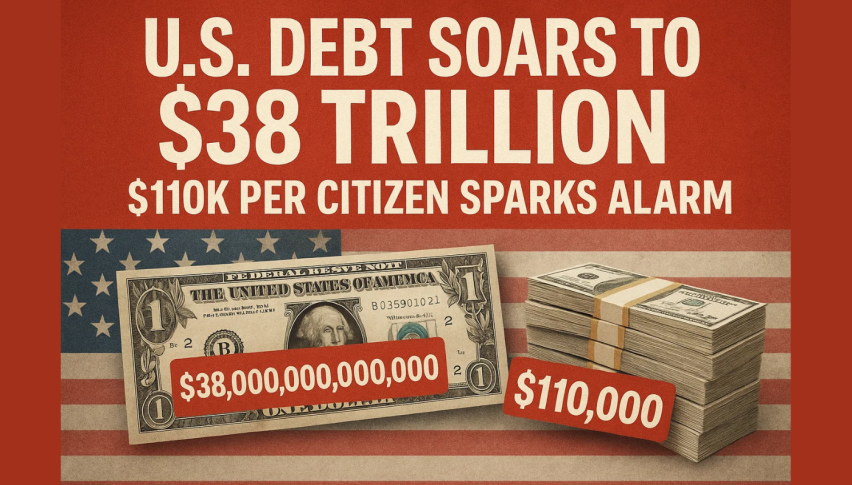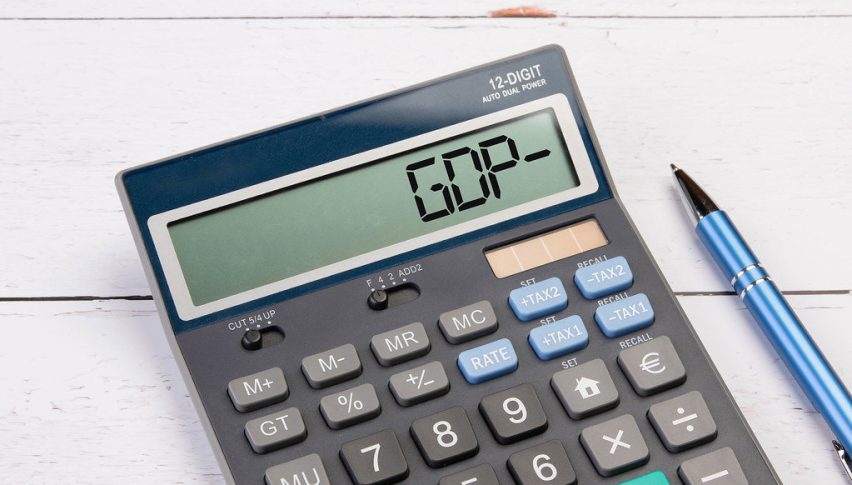U.S. Debt Soars to $38 Trillion — $110K Per Citizen Sparks Alarm
US national debt now sits at a staggering $38 trillion, up from $37 trillion in less than three months—a pretty eye-catching...

Quick overview
- The US national debt has surged to $38 trillion, with each citizen's share exceeding $110,000.
- Senators Rand Paul and Rick Scott express concerns over unsustainable spending and its threat to the American Dream.
- Financial experts warn of potential economic stagnation or a rapid debt crisis if spending continues unchecked.
- Projections indicate the national debt could reach $53 trillion by 2035 without significant fiscal reforms.
US national debt now sits at a staggering $38 trillion, up from $37 trillion in less than three months—a pretty eye-catching rise that only underscores the ongoing struggle lawmakers have in reining in spending. It’s a number so large that each of the 330 million US citizens now has a personal debt of over $110,000. And the debt-to-GDP ratio of 120.63%? That’s a real worry sign, one that could well put long-term economic stability at risk.
Senator Rand Paul went on social media to lambast Congress, saying, “We’re no closer to balancing the budget,” and that both sides are still clamoring for billions of extra dollars to spend. Senator Rick Scott weighed in too, describing the situation in stark terms: “It’s unsustainable… a direct threat to the American Dream. A threat to the very way we live our lives.”
Economic Risks and Investor Concerns
Financial experts are sounding the warning that if this debt keeps growing, there will be serious consequences for the economy. Going back to March, the House Budget Committee said that if things don’t get sorted out and spending continues to spiral out of control, we could be looking at:
- A slow decline into stagnation: years of just bumping along.
- Or a rapid debt crisis, where our international creditors say we can’t pay and start calling in their chips.
David Kelly at JPMorgan Asset Management is telling people to get their portfolios in order—add some alternative assets and international stocks to the mix. He says, “The risk that we run out of money slowly is one thing, but the real worry is that we’ll run out of money fast, so you need to move now.”
🇺🇸 U.S. National Debt Soars to Record-Breaking $38 Trillion Milestone pic.twitter.com/gGedIyFYtp
— De_Unique (@De_Unique283) October 22, 2025
Future Projections and Policy Challenges
The CRFB think tank projects that our national debt could reach $53 trillion by 2035 if we don’t address it. And economists and policy analysts are shouting at everyone that we need to act now or face disastrous consequences.
But some investors are skeptical that we’ll ever get enough fiscal reform to solve the problem. Ray Dalio, founder of Bridgewater, says it may already be too late—politics will water down any moves we make so much that they won’t do much good. Meanwhile, the whole of the US is arguing about what it all means for growth, inflation, and the viability of our social programs.
Key Figures:
- debt per citizen: more than $110,000
- Debt-to-GDP ratio: 120.63% and by 2035, our debt could be $53 trillion
- The $38 trillion national debt is a stark warning that we need to get our fiscal house in order or we’ll be in for a world of hurt.
With politicians gridlocked and spending still out of control, ordinary citizens and investors alike are having to think about the very real costs of a national debt that keeps on growing.
- Check out our free forex signals
- Follow the top economic events on FX Leaders economic calendar
- Trade better, discover more Forex Trading Strategies
- Open a FREE Trading Account


